Category: Features
-

CFM 10/13-10/19 (D&C 115-120): Poetry for “His Sacrifice Shall Be More Sacred unto Me Than His Increase”
Sacrifice is a key gospel concept, and as such is also a key concept for life. Whether the it involves one person giving up something to help others or simply the individual giving up something for his own benefit, sacrifice is always about making decisions that balance one benefit or good against another. So we…
-
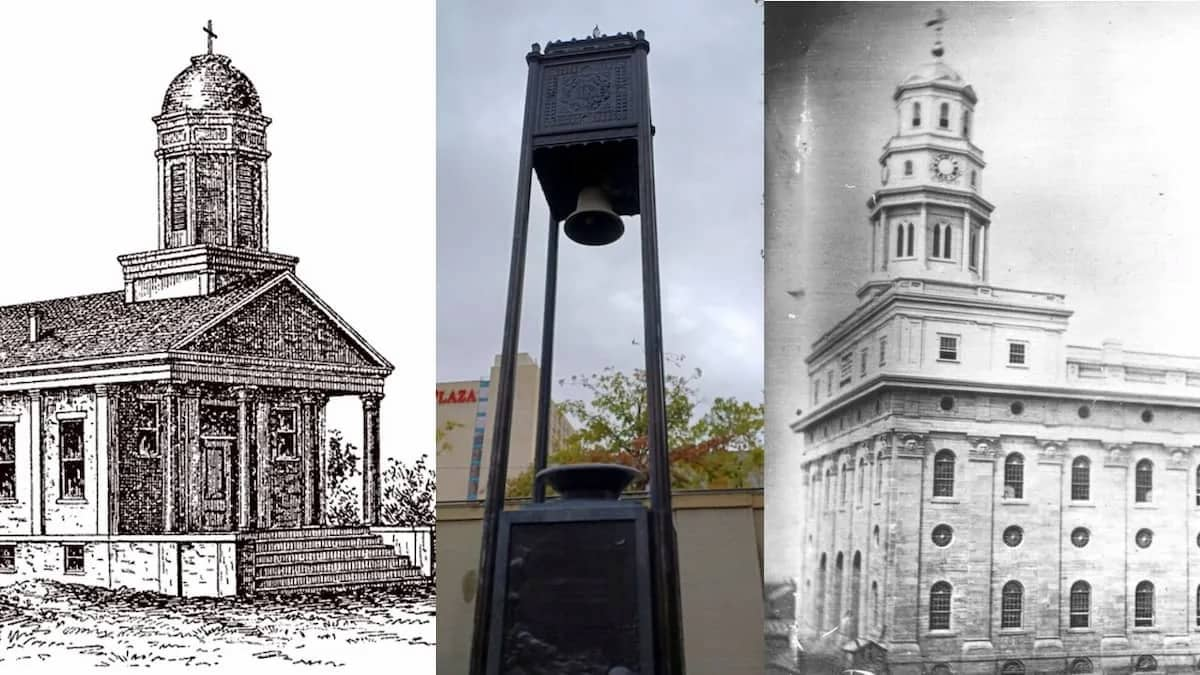
The Nauvoo Bell That Wasn’t
Several months ago, I put out a post on the disappearance of the bell that has been on Temple Square for decades during the recent renovations. I shared the story of the bell, which has been called the Nauvoo Bell, but which is actually the Hummer Bell from a Presbyterian church in Iowa City. At…
-
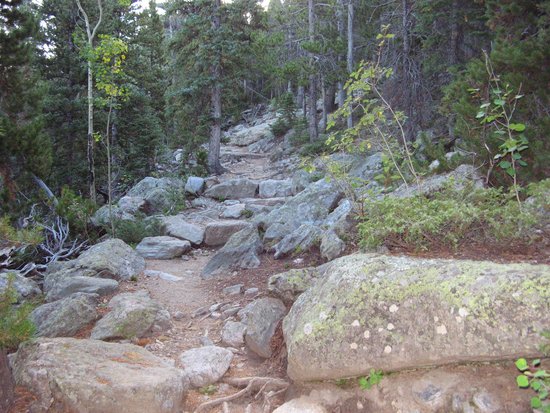
CFM 10/06-10/12 (D&C 111-114): Poetry for “I Will Order All Things for Your Good”
If things have been ordered for our good, do the things look like they have been ordered or arranged? This week’s Come Follow Me lesson title implies that what happens in our lives is meant to help us both now and in the hereafter. The statement “I will order all things for your good” is…
-
Jonathan Stapley on Temple Worship
For those of us who have long been fascinated by the historical development of Latter-day Saint temple worship, Jonathan Stapley’s recent work, Holiness to the Lord: Latter-day Saint Temple Worship, and his insightful interview on the subject at the Latter-day Saint history site From the Desk offer a significant contribution to the conversation. The interview offers…
-
Book Review: Elias—An Epic of the Ages: A Critical Edition, by Orson F. Whitney, edited by Reid L. Neilson
Elias—An Epic of the Ages: A Critical Edition, edited by Reid L. Neilson and published by Greg Kofford Books, is an important effort to preserve and present a landmark text in the literary history of Latter-day Saints. Orson F. Whitney, a Church leader and gifted writer at the turn of the twentieth century, sought to…
-

CFM 9/29-10/05 (D&C 109-110): Poetry for “It Is Thy House, a Place of Thy Holiness”
I like this photo of the Bangkok Thailand Temple. I know many people will see in it an island of good among a sea of chaos and evil. I can’t disagree more with that view—most of humanity doesn’t live in the stereotypical suburban pastoral nowhere favored by the world, and where they do live is…
-
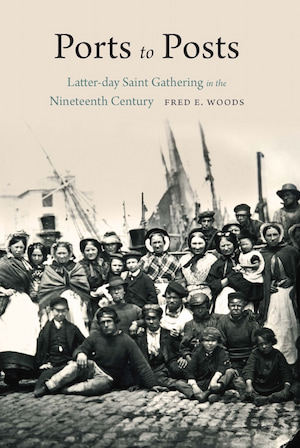
Book Review: Ports to Posts: Latter-day Saint Gathering in the Nineteenth Century
Fred E. Woods’s Ports to Posts: Latter-day Saint Gathering in the Nineteenth Century offers a richly detailed and engaging exploration of the emigration process that carried thousands of Latter-day Saint converts from their homelands to the American frontier. Rather than focusing narrowly on one facet of the story, Woods takes a broad and careful approach,…
-
Richard Bushman Reflects on Rough Stone Rolling
Twenty years ago, Richard Lyman Bushman’s biography of Joseph Smith the Prophet was published. The book has had a huge impact on English-speaking Latter-day Saints. He recently reflected on Joseph Smith: Rough Stone Rolling in an interview at the Latter-day Saint history blog From the Desk. What follows here is a copost to the full interview.
-
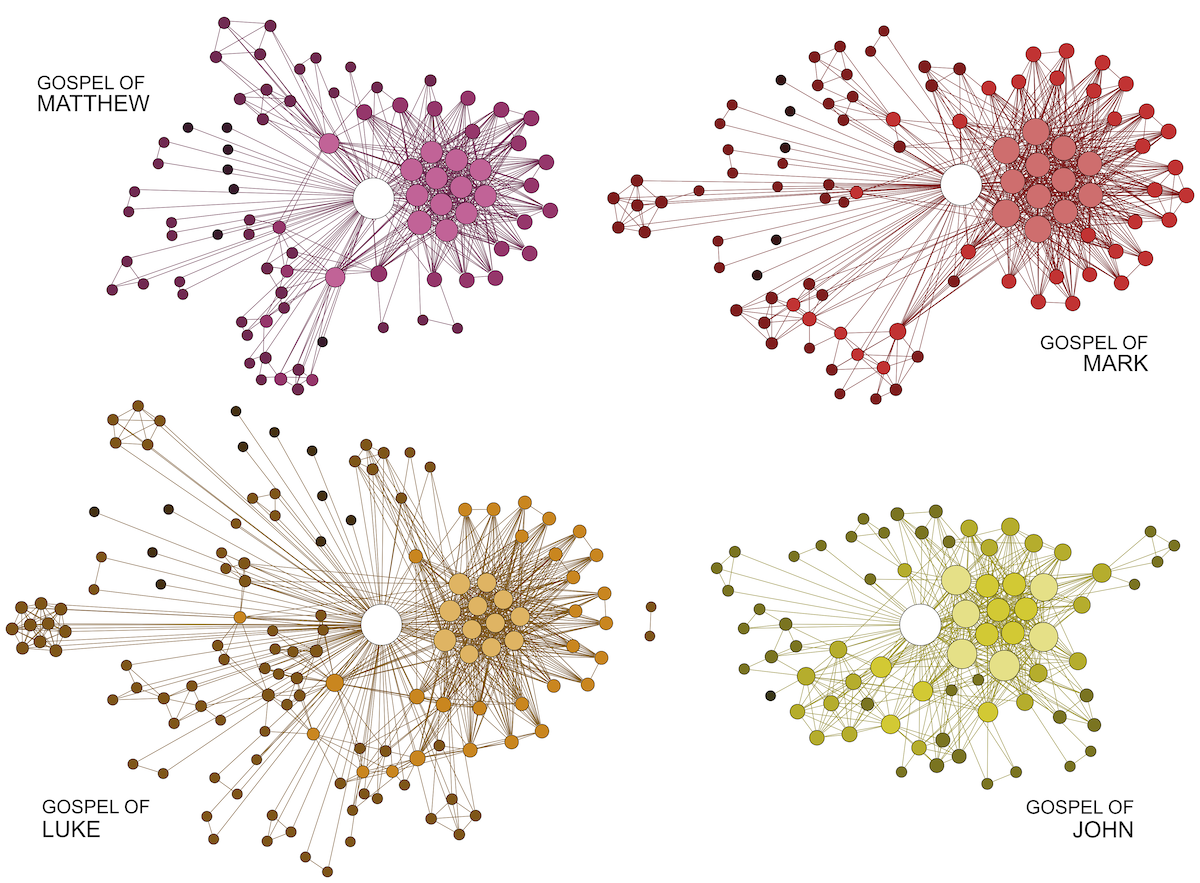
CFM 9/22-9/28 (D&C 106-108): Poetry for “The Order of the Son of God”
Like it or not, our lives are built of structures. We organize our days according to everything from natural events, like the rising and setting of the sun and our own biological rhythms, to the hours of the clock that our society has assigned to the day, to the needs we have to coordinate with…
-
Book Review: The D&C and Church History ARTbook, volume one
The D&C and Church History ARTbook, volume one, curated by Esther Hi’ilani Candari and published by By Common Consent Press, is a fantastic resource for gospel artwork. It is chock-full of beautiful and thought-provoking pieces on gospel themes that complement the Doctrine and Covenants “Come, Follow Me” curriculum. One of the strengths of the book…
-
A Global Mormonism Collection
I was very excited that earlier this week, we were able to publish a page on From the Desk about Global Mormonism: Latter-day Saints Around the World. This is the culmination of years of effort to identify published histories about communities in The Church of Jesus Christ of Latter-day Saints outside of the historically prevalent…
-

CFM 9/15-9/21 (D&C 102-105): Poetry for “After Much Tribulation … Cometh the Blessing”
I noticed this time through the Doctrine and Covenants how the idea of trials is a major theme of this book of scripture. And the sections in this week’s lesson are during one of the most challenging periods of trials in early church history, the first round of persecution in Missouri and the subsequent travel…
-
Do you forsake Mormon celebrities?
Do you forsake Mormon celebrities? Yea, I forsake. Do you forsake vicarious satisfaction in their professional success? Yea, I forsake. Do you forsake their works and fandom that you served in former times? Yea, I forsake.
-
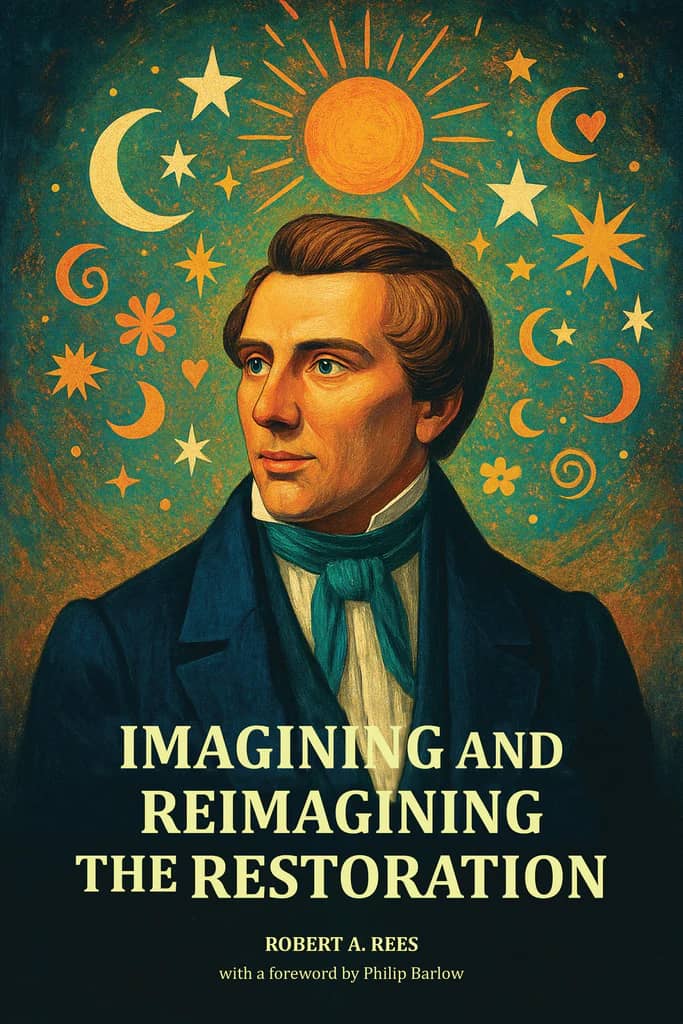
Book Review: Imagining and Reimagining the Restoration, by Robert A. Rees
Imagining and Reimagining the Restoration, by Robert A. Rees, offers a moving and thoughtful vision of what a progressive-yet-faithful Latter-day Saint discipleship can look like. Rees—a poet, scholar, and former editor of Dialogue: A Journal of Mormon Thought—draws on a lifetime of devotion and intellectual engagement to explore themes such as Heavenly Mother, the recovery…
-
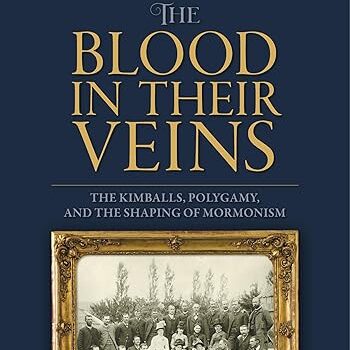
Book Review: The Blood in Their Veins: The Kimballs, Polygamy, and the Shaping of Mormonism, by Andrew Kimball (Signature Books)
Andrew Kimball’s The Blood in Their Veins offers a compelling and deeply textured exploration of the Kimball family, one of the most prominent lineages in Latter-day Saint history. Centering on the children and descendants of Heber C. Kimball—who himself had forty-three wives and sixty-five children—the book navigates a vast narrative landscape. In doing so, it…
-
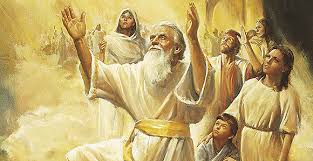
CFM 9/1-9/7: Poetry for “For the Salvation of Zion” (D&C 94-97)
We focus on the temple, and we have from the beginning of the Church. The temple plays a crucial role in our theology, but also a role that demonstrates tensions between principles. While the ordinances of the temple are done individually, those ordinances are often performed in groups, and the purpose of these ordinances generally…
-
Nazis and Latter-day Saints
I’ve seen that the Church sometimes gets a bad reputation for how it navigated Nazi Germany in the 1930s and 1940s. One thing that tends to get overlooked, however, was the amount of pressure the Church felt from the Nazi regime. In a recent interview at the Latter-day Saint history blog, Stephen O. Smoot discussed…
-
Book Review: The Restored Gospel of Jesus Christ and Evolution
The Restored Gospel of Jesus Christ and Evolution represents one of the most ambitious and carefully framed efforts to date to navigate the intersections of evolutionary science and the doctrines of The Church of Jesus Christ of Latter-day Saints. Edited by Jamie L. Jensen, Steven L. Peck, Ugo A. Perego, and T. Benjamin Spackman, BYU’s…
-

CFM 8/25-8/31: Poetry for “Receive of His Fulness”
What do we mean when we talk about ‘Fulness’? The Come Follow Me lesson for this week, covering D&C 93, suggests that it’s related to exaltation—but I’m not sure that we know exactly what exaltation is either. ‘Fulness’ suggests some kind of completeness or satiation—we will have everything we need, and maybe everything we should…
-
Eduardo Balderas
Eduardo Balderas is an often-overlooked figure who made tremendous contributions to The Church of Jesus Christ of Latter-day Saints. In a recent interview at the Latter-day Saint history blog From the Desk, biographer Ignacio Garcia shared some insights into who Balderas was.
-
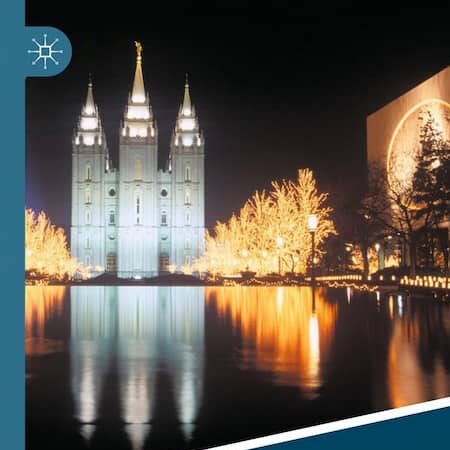
The Palgrave Handbook of Global Mormonism, a Review
The Palgrave Handbook of Global Mormonism, edited by R. Gordon Shepherd, A. Gary Shepherd, and Ryan T. Cragun, is a landmark anthology that shifts the center of gravity in Latter-day Saint scholarship from a nineteenth-century, Utah-centric narrative to a nuanced, data-rich exploration of Mormonism as a global religious tradition. With 31 chapters contributed by 42…
-

CFM 8/18-8/24: Poetry for “A Principle with Promise”
Most of the time when we hear the phrase “A Principle with Promise,” we think of D&C Section 89 and the promise that we can “run and not be weary.” However, some kind of promise is associated with every gospel principle—there is at least one consequence that accompanies every principle, and the accompanying consequences follow…
-
The Civil War Prophecy
Section 87 of the Doctrine and Covenants is a curious document. It is a revelation Joseph Smith received on December 25, 1832 that foretold a war beginning with the rebellion of South Carolina, spreading to conflict between the Southern and Northern U.S. states, drawing in foreign powers, sparking slave uprisings, and culminating in global calamities…
-

CFM 8/11-8/17: Poetry for “Establish … a House of God”
Perhaps the most memorable verse in D&C 88 is 119, which establishes the ‘School of the Prophets’ and encourages our cultural orientation towards education: “Organize yourselves; prepare every needful thing; and establish a house, even a house of prayer, a house of fasting, a house of faith, a house of learning, a house of glory,…
-

CFM 8/4-8/10: Poetry for “Stand Ye in Holy Places”
What are ‘Holy Places’? What makes them holy? Are there different kinds of ‘Holy Places’? Has our understanding of ‘Holy Places’ changed over time? I suspect that most LDS Church members think of the Temple when we think of a holy place, but when pushed we might agree that the Sacred Grove is also a…
-
William Clark and the Utah War
The Utah War was a dramatic episode in the history of the antebellum western United States. One of the most remarkable records to discuss the experience of traveling west with the Utah Expedition is the memoirs of William Clark. These were recently published anew, edited and annotated by William P. MacKinnon and Kenneth L. Alford.…
-

CFM 7/28-8/3: Poetry for “The Power of Godliness”
If the priesthood is “The Power of Godliness,” and if we are to learn how to use that power, we should probably think a lot about what the word “power” means in this context. Most of the time power is associated with the ability to control things, often including people and usually by force. But…
-
Practical ways to cultivate resilience and gratitude
Guest post by Fotini Tzouveleki Life is not always sunshine and rainbows. Most of the times, things do not get your way. You might find out that your friends have been mean behind your back or that your boss is planning to fire you. However, there are ways to build resilience so strong, it can…
-
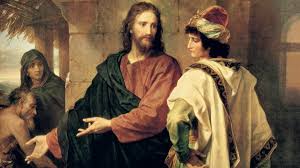
CFM 7/21-7/27: Poetry for “Where Much Is Given Much Is Required”
The idea behind “Where Much is Given, Much is Required” goes beyond just the idea of responsibility or accountability. There is also in the phrase a sense of equity and care for others that isn’t necessarily part of responsibility. The idea is clearly the opposite of the images we see of excessive displays of wealth,…
-
Wilford Woodruff’s Missions
Wilford Woodruff was a tremendously successful missionary in his early days as a member of the Church. Through doing so, he offered an example of many praiseworthy attributes, which were discussed by Kristy Wheelwright in her recently published book, Prepare Me for Thy Use: Lessons from Wilford Woodruff’s Mission Years. She also discussed some of…
